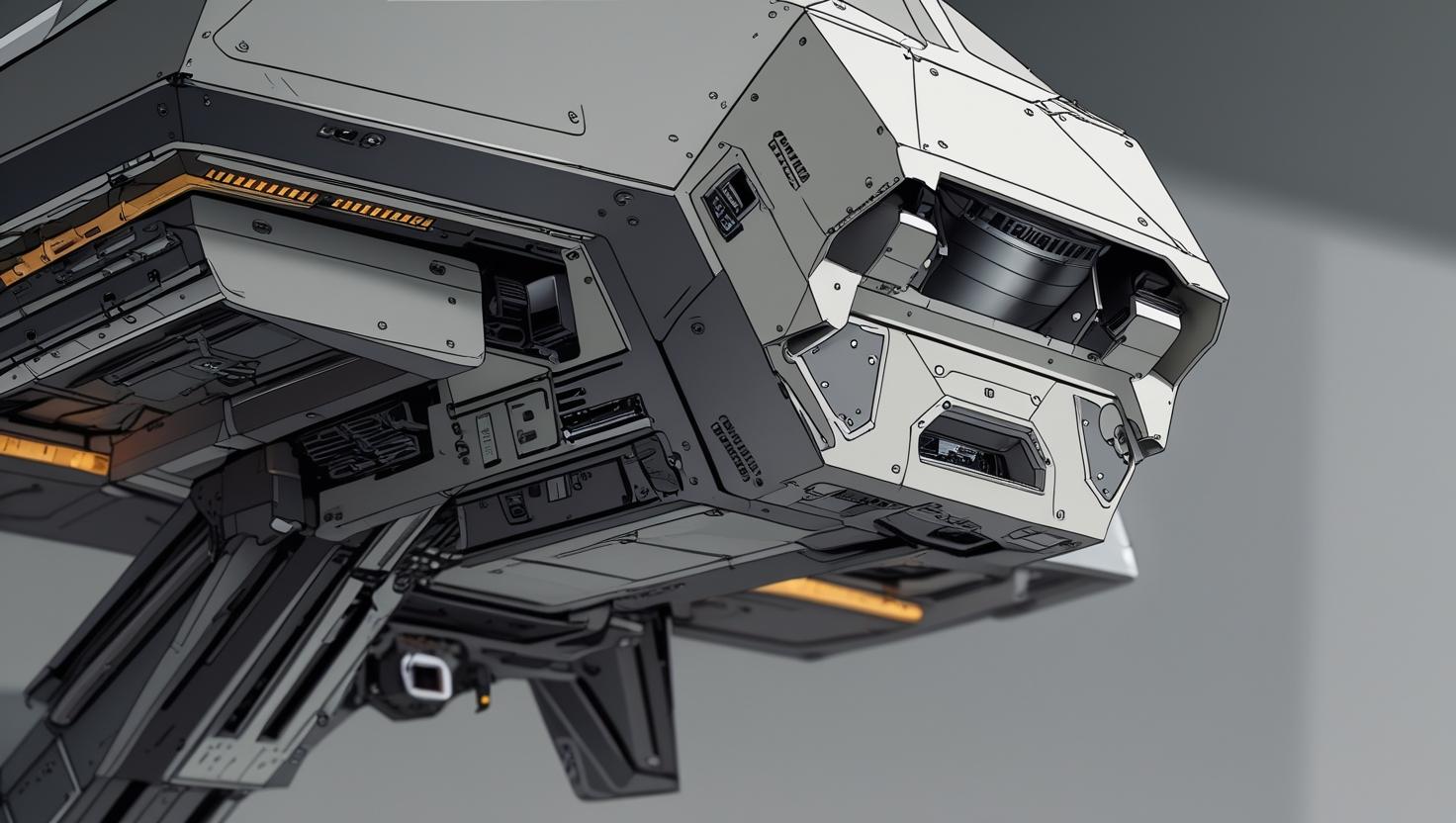
Understanding the Scope and Importance of the Counter UAS Market
The Counter UAS Market encompasses a wide range of technologies, systems, and services designed to detect, track, identify, and neutralize unauthorized or hostile drones. The rapid rise in drone usage across civilian, commercial, and military domains has amplified concerns about their potential misuse, including espionage, smuggling, terrorism, and airspace violations. As a result, governments, defense agencies, and private organizations are investing heavily in the Counter UAS Market to safeguard critical infrastructure, public spaces, and national security.The significance of the Counter UAS Market lies in its ability to address evolving threats posed by drones. Small, agile, and often difficult to detect, drones can bypass traditional security measures, making advanced counter-UAS solutions indispensable. From airports and stadiums to military bases and urban centers, the Counter UAS Market plays a pivotal role in ensuring safety and security by offering tailored solutions to neutralize drone threats effectively.
Key Drivers Fueling Growth in the Counter UAS Market
Several factors are propelling the expansion of the Counter UAS Market, reflecting the dynamic interplay of technological, regulatory, and geopolitical influences. One of the primary drivers is the increasing accessibility of drones, which has lowered barriers to entry for both legitimate users and potential adversaries. The affordability and versatility of consumer drones have raised concerns about their use in illicit activities, prompting governments to prioritize investments in the Counter UAS Market.Technological advancements in drone capabilities, such as enhanced maneuverability, longer flight times, and advanced payloads, have further accelerated the need for robust anti-drone technology. As drones become more sophisticated, the Counter UAS Market must evolve to counter these advancements, driving innovation in detection and neutralization systems. Additionally, rising incidents of drone-related security breaches, such as unauthorized drone incursions near airports or sensitive facilities, have underscored the urgency for scalable solutions within the Counter UAS Market.
Regulatory frameworks also play a significant role in shaping the Counter UAS Market. Governments worldwide are implementing stricter regulations to govern drone operations, which, in turn, bolster demand for counter-UAS systems to enforce compliance. For instance, the Federal Aviation Administration (FAA) in the United States and similar bodies globally have introduced policies to monitor and control drone activities, further fueling the growth of the Counter UAS Market.
Technological Innovations Shaping the Counter UAS Market
The Counter UAS Market is characterized by rapid technological advancements, with innovations in detection, tracking, and neutralization technologies at the forefront. These advancements are critical to addressing the diverse and evolving nature of UAS threats. Key technologies within the Counter UAS Market include radar systems, radio frequency (RF) sensors, electro-optical/infrared (EO/IR) systems, and jamming or interception solutions.Radar systems are a cornerstone of drone detection within the Counter UAS Market, offering the ability to identify small, low-flying drones in complex environments. Modern radar solutions leverage advanced signal processing to distinguish drones from other objects, such as birds or environmental clutter, ensuring high accuracy. Similarly, RF sensors play a vital role in detecting the communication signals between drones and their operators, enabling real-time tracking and identification.
EO/IR systems enhance the Counter UAS Market by providing visual and thermal imaging capabilities, which are particularly effective in low-visibility conditions. These systems are often integrated with artificial intelligence (AI) and machine learning (ML) algorithms to improve target recognition and reduce false positives. For neutralization, the Counter UAS Market employs a range of solutions, including RF jamming, laser systems, and kinetic interceptors, each designed to disable or destroy hostile drones with precision.
The integration of AI and ML into the Counter UAS Market has revolutionized system performance, enabling autonomous decision-making and predictive analytics. These technologies allow counter-UAS systems to adapt to new threats, analyze drone behavior patterns, and optimize response strategies, making them indispensable in modern drone defense.
Applications of Counter UAS Systems Across Diverse Sectors
The versatility of the Counter UAS Market is evident in its wide-ranging applications across military, commercial, and civilian sectors. In the military domain, counter-UAS systems are critical for protecting forward operating bases, convoys, and strategic assets from drone-based threats. The Counter UAS Market provides solutions tailored to the unique challenges of battlefield environments, where drones may be used for reconnaissance, surveillance, or weaponized attacks.In the commercial sector, the Counter UAS Market serves industries such as aviation, energy, and critical infrastructure. Airports, for example, rely on anti-drone technology to prevent disruptions caused by unauthorized drone activity, which can lead to flight delays or safety risks. Energy facilities, including oil refineries and power plants, utilize counter-UAS systems to safeguard against potential sabotage or espionage, ensuring operational continuity.
The civilian sector also benefits significantly from the Counter UAS Market, particularly in urban areas and public spaces. Major events, such as sports tournaments, concerts, and political gatherings, require robust drone defense to protect attendees from potential threats. Additionally, law enforcement agencies leverage counter-UAS systems to monitor and secure public spaces, enhancing community safety.

Regional Dynamics and Market Opportunities in the Counter UAS Market
The Counter UAS Market exhibits distinct regional dynamics, with North America, Europe, Asia-Pacific, and the Middle East emerging as key growth hubs. North America leads the Counter UAS Market, driven by substantial defense budgets, technological innovation, and stringent regulations. The United States, in particular, is a major contributor, with significant investments in counter-UAS research and deployment by agencies such as the Department of Defense (DoD) and the Department of Homeland Security (DHS).Europe is another prominent region in the Counter UAS Market, fueled by increasing concerns about drone-related security threats and collaborative defense initiatives. Countries like the United Kingdom, Germany, and France are investing in advanced anti-drone technology to protect critical infrastructure and public spaces, contributing to market growth.
The Asia-Pacific region is witnessing rapid expansion in the Counter UAS Market, driven by rising defense expenditures and the growing adoption of drones in commercial and military applications. Countries such as China, India, and Japan are prioritizing counter-UAS solutions to address regional security challenges, creating significant market opportunities.
The Middle East, known for its geopolitical complexities, is a critical market for counter-UAS systems. The region’s strategic importance and vulnerability to drone-based threats, including those from non-state actors, have spurred demand for advanced drone defense solutions, further bolstering the Counter UAS Market.
Challenges Facing the Counter UAS Market
Despite its growth potential, the Counter UAS Market faces several challenges that could impact its trajectory. One of the primary challenges is the rapid evolution of drone technology, which requires counter-UAS systems to continuously adapt to new capabilities, such as stealth features or autonomous navigation. Staying ahead of these advancements demands significant investment in research and development, posing a challenge for smaller players in the Counter UAS Market.Another challenge is the balance between effectiveness and safety. Neutralization techniques, such as kinetic interceptors or laser systems, must be precise to avoid collateral damage, particularly in urban environments. The Counter UAS Market must address these concerns by developing solutions that minimize risks to bystanders and infrastructure while effectively neutralizing threats.
Regulatory hurdles also pose challenges to the Counter UAS Market. The deployment of counter-UAS systems, particularly those involving jamming or interception, is subject to strict regulations to prevent interference with legitimate communications or aviation systems. Navigating these regulatory frameworks requires close collaboration between industry stakeholders and policymakers, which can slow market adoption.
Competitive Landscape of the Counter UAS Market
The Counter UAS Market is highly competitive, with a mix of established defense contractors, technology firms, and innovative startups vying for market share. Leading players in the Counter UAS Market include Lockheed Martin, Raytheon Technologies, Boeing, and Thales, which leverage their expertise in defense and aerospace to deliver advanced counter-UAS solutions. These companies invest heavily in research and development to enhance their product portfolios and maintain a competitive edge.Emerging players, such as Dedrone, DroneShield, and Blighter Surveillance Systems, are also making significant inroads in the Counter UAS Market by offering specialized solutions tailored to specific applications. These companies focus on niche areas, such as portable counter-UAS systems or AI-driven detection platforms, to differentiate themselves in the market.
Strategic partnerships and collaborations are common in the Counter UAS Market, as companies seek to combine their expertise to deliver comprehensive solutions. For example, partnerships between radar manufacturers, software developers, and defense contractors enable the integration of multiple technologies into cohesive counter-UAS systems, enhancing their effectiveness.
Future Trends Shaping the Counter UAS Market
The Counter UAS Market is poised for continued growth, driven by emerging trends that promise to reshape the industry. One key trend is the increasing adoption of multi-layered counter-UAS systems, which combine multiple detection and neutralization technologies to provide comprehensive protection. These systems are particularly effective in complex environments, where a single technology may be insufficient to address diverse threats.Another trend is the growing emphasis on autonomous counter-UAS solutions. As drones become more autonomous, counter-UAS systems are incorporating AI and ML to enable real-time decision-making and adaptive responses. This trend is expected to enhance the efficiency and scalability of the Counter UAS Market, particularly for large-scale deployments.
The integration of counter-UAS systems with broader security ecosystems is also gaining traction. For example, combining counter-UAS solutions with cybersecurity platforms or command-and-control systems allows for seamless threat detection and response, creating synergies that enhance overall security.
Economic and Strategic Implications of the Counter UAS Market
The Counter UAS Market has significant economic and strategic implications, as it supports job creation, technological innovation, and national security. The development and deployment of counter-UAS systems contribute to economic growth by fostering advancements in related fields, such as AI, radar technology, and cybersecurity. Additionally, the Counter UAS Market creates opportunities for small and medium-sized enterprises (SMEs) to innovate and compete alongside established players.Strategically, the Counter UAS Market strengthens national and global security by addressing emerging threats in an increasingly drone-dependent world. By investing in counter-UAS technologies, governments and organizations can protect critical assets, maintain public safety, and deter potential adversaries, reinforcing the strategic importance of the Counter UAS Market.
Addressing Ethical and Privacy Concerns in the Counter UAS Market
As the Counter UAS Market expands, ethical and privacy concerns are coming to the forefront. The use of counter-UAS systems, particularly in civilian settings, raises questions about surveillance, data collection, and potential misuse. For example, RF sensors and EO/IR systems may inadvertently capture sensitive information, prompting concerns about privacy violations.To address these concerns, the Counter UAS Market must prioritize transparency and accountability. Industry stakeholders are working to develop systems that comply with data protection regulations, such as the General Data Protection Regulation (GDPR) in Europe, while ensuring effective threat mitigation. Public awareness campaigns and clear communication about the purpose and scope of counter-UAS deployments can also help build trust.
The Role of International Collaboration in the Counter UAS Market
Given the global nature of drone threats, international collaboration is essential for the Counter UAS Market. Countries are increasingly sharing intelligence, best practices, and technological expertise to combat UAS threats collectively. Initiatives such as NATO’s Counter-UAS programs and bilateral agreements between nations facilitate the development and deployment of standardized counter-UAS solutions, enhancing global security.International collaboration also supports the harmonization of regulations governing counter-UAS technologies, ensuring consistency across borders. By fostering cooperation, the Counter UAS Market can address transnational threats, such as drone smuggling or cross-border attacks, more effectively.
The Future of the Counter UAS Market
The Counter UAS Market is at a pivotal juncture, driven by the rapid proliferation of drones and the need for advanced security solutions. With technological innovations, expanding applications, and growing regional demand, the Counter UAS Market is poised for sustained growth in the coming years. However, challenges such as regulatory hurdles, ethical concerns, and the need for continuous innovation must be addressed to unlock its full potential.
By leveraging advancements in AI, multi-layered systems, and international collaboration, the Counter UAS Market can continue to evolve, offering robust solutions to counter the dynamic threats posed by unmanned aerial systems. As the market matures, it will play an increasingly vital role in shaping the future of global security, ensuring safety in an era defined by technological disruption.
